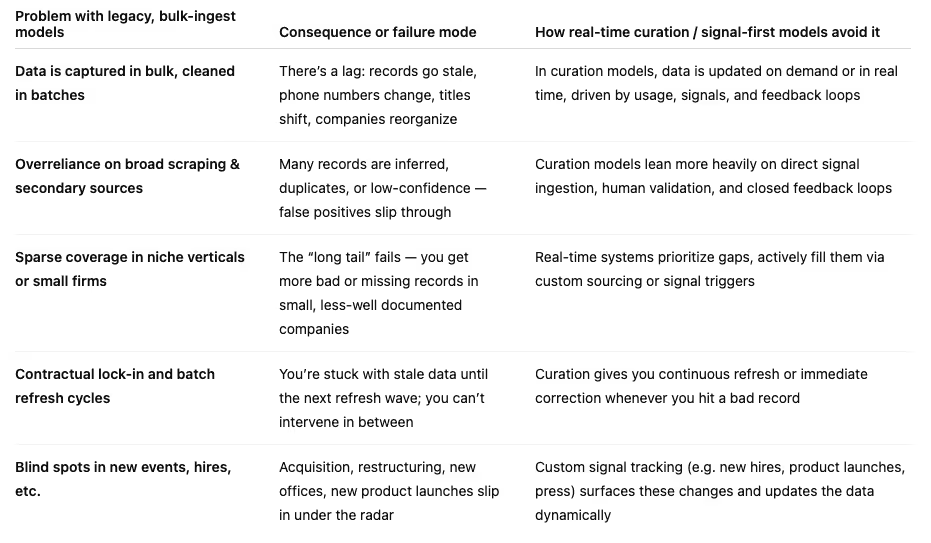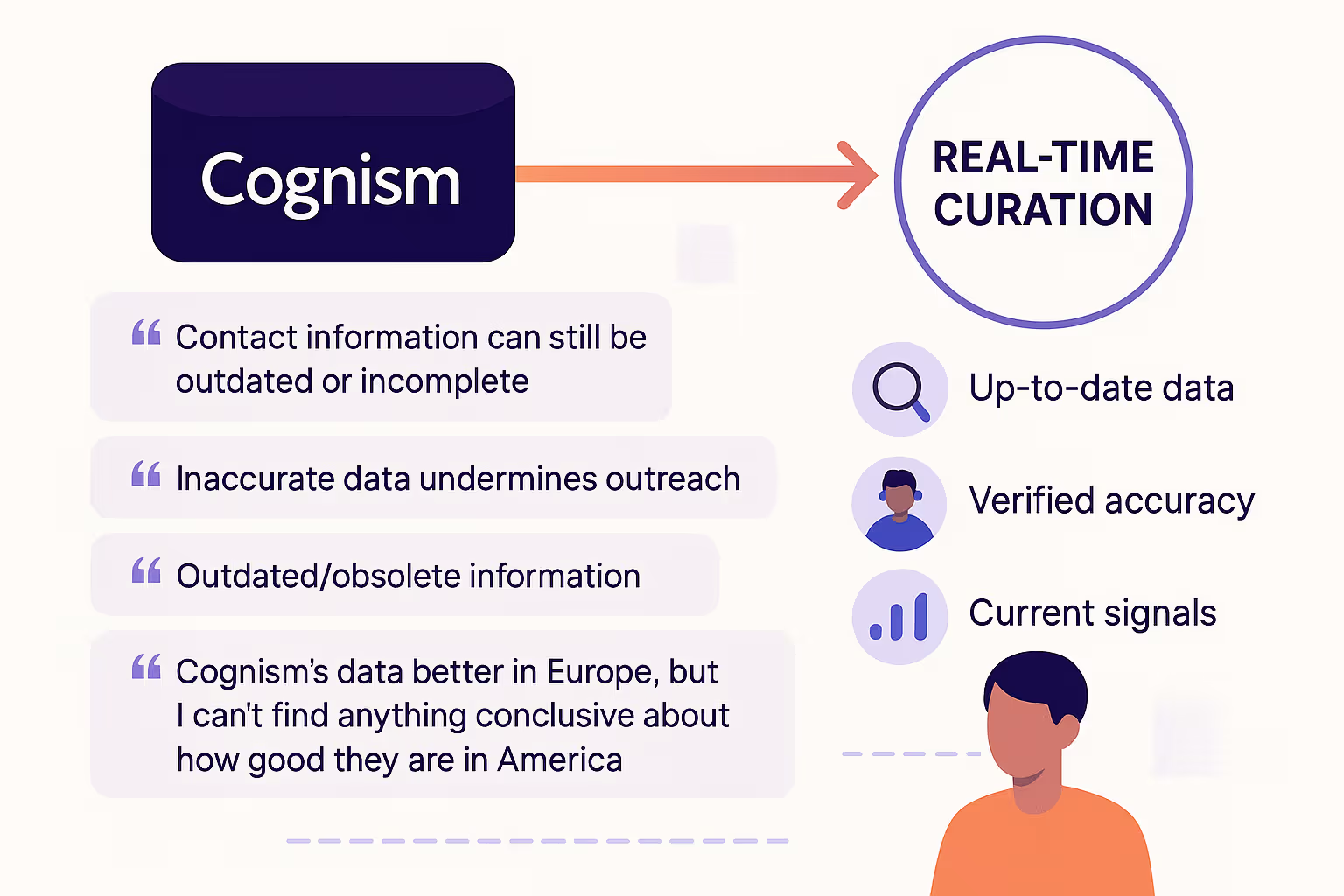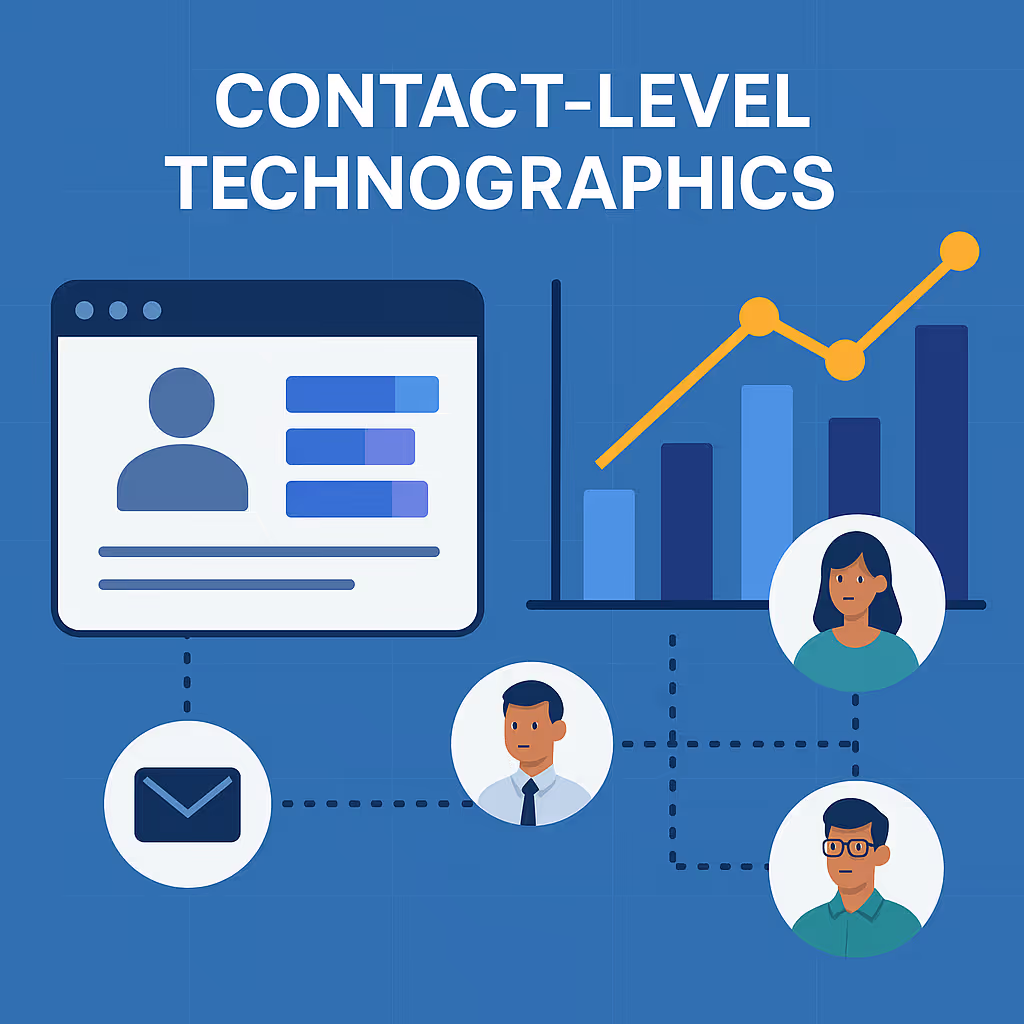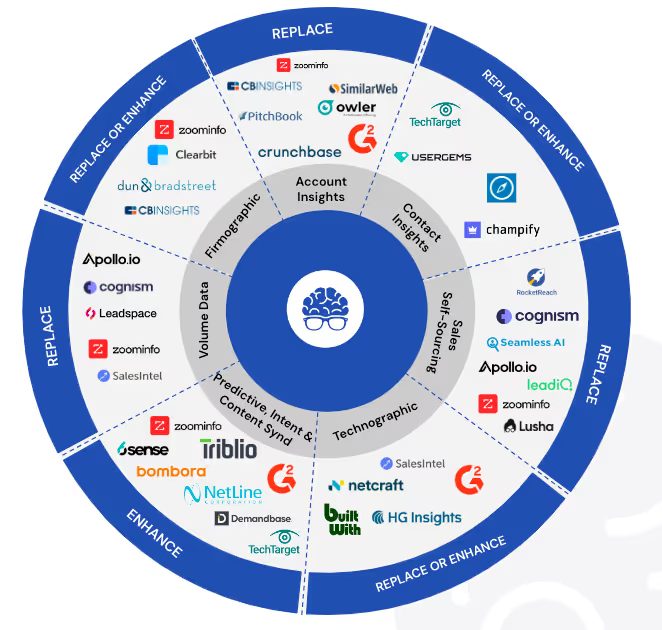Cognism still retains a strong base of users who praise it for certain strengths (especially in EMEA), but the “Cons” section on G2 has been steadily swelling with complaints. Some recurring themes:
- “Some contact information can still be outdated or incomplete.”
“While Cognism offers high-quality data, some contact information can still be outdated or incomplete.” G2
“Occasionally, we notice gaps—especially with niche markets or very recent contacts.” G2+1
- “Inaccurate data undermines outreach.”
“Users report inaccurate data in Cognism … wrong contact information.” G2
“Can provide inaccurate data … can ruin your reach out.” G2
- “Outdated/obsolete information.”
“Sometimes the data is not always as accurate as I'd like … occasionally outdated or incorrect information.” G2+1
“Some prospects have 0 data available.” G2
- Regional and niche coverage limitations
Many users concede Cognism performs better in Europe but degrade in the U.S. or in specialty verticals.
“Cognism data is better for Europe but I can’t find anything conclusive about how good they are in America.” Reddit
“Cognism is solid, but scaling lead gen (especially for niche roles or smaller companies) got expensive fast.” Reddit
- Cost, contract inflexibility, and value gaps
“The pricing may be steep for smaller businesses.” G2
“Hidden pricing, long annual contracts, and gaps in North American or niche data.” coldreach.ai
Notably, G2 feature scores show Cognism’s “Contact Data Accuracy” is rated ~7.9/10, whereas its rivals like Clay are scoring higher in that metric. G2
So yes — the user base isn’t totally rejecting Cognism; many still find it useful. But the truth is that their complaints (and gradual churn) point to structural weaknesses that real-time curation is built to overcome.
Reddit & forum-level gripes: from casual to cutting
Reddit threads and user forums offer more raw, blunt feedback:
- In r/sales, a user asked:
“Has anyone used or have experience with Cognism? … Their marketing makes interesting and classic ‘we’re the best’ claims…” Reddit
- The implicit subtext: some are skeptical that the reality matches the marketing.
- In r/sales, a user weighed EMEA vs US value:
“Cognism data is better for Europe but I can’t find anything conclusive about how good they are in America.” Reddit
- In r/automation, someone did comparative testing:
“Cognism: Better in EU, worse in US. B2B Rocket: Slightly worse in EU, better in US.” Reddit
- In r/LeadGeneration one thread on switching tools:
“Cognism is solid, but scaling lead gen (especially for niche roles or smaller companies) got expensive fast.” Reddit
- In r/sales comparing lead gen tools:
“Cognism is expensive and I don't find their data to be any higher quality than free tools.” Reddit
- That’s a pretty bold indictment from someone saying: “Why pay if I can do nearly the same with cheaper tools?”
These voices may not always be hyper-representative, but they reflect underlying frustration, especially among power users or those pushing the limits of scale and specificity.
Why These Complaints Are Systemic, Not Occasional
Below are structural forces that make subpar data inevitable in the legacy data model (which Cognism still largely embodies), and how real-time curation flips those limitations.

In other words: the legacy “data lake + batch refresh” model is optimized for scale, not dynamism or correctness under change. But in today’s GTM world, change is the only constant.
So if your data vendor doesn’t have a tight feedback loop, signal capture, and in-flight curation, you’ll see decay. And that's exactly what many Cognism users are starting to observe.
The Cognism + Kaspr Acquisition: Market Strategy or Patch over a Cracking Foundation?
The acquisition of Kaspr (a French prospecting/data provider) is interesting, but also telling. On one hand, it gives Cognism:
- Deeper access to the French market
- A local team and data source (which helps with regional compliance, language, etc.)
- A freemium/PLG entry model to attract individual contributors or smaller teams
James Isilay (Cognism CEO) even says this merger “provides nearly 30% more mobile coverage in key markets” and enables PLG credit-card purchasing. That sounds sexy.
But here’s what it doesn’t instantly fix:
- It doesn’t address the real-time decay inherent in legacy bulk pipelines. Even with more volume or region depth, if cycles are batch-based, staleness remains.
- It doesn’t immediately improve signal-driven insight (e.g. custom hires, supply chain, new product launches) — Kaspr is more a volume/contact engine, less of a signal engine.
- Adding coverage is good, but signal accuracy and curation quality is what separates “more” from “better.” You can flood a system with contacts, but if many are wrong, the ROI erodes quickly.
In short: the acquisition is a smart tactical play, and may shore up gaps (especially in Francophone markets), but it doesn’t fundamentally overcome the structural data decay or quality drift that plagues large-scale contact databases.
The New Breed: Real-Time Curation and Signal-First Platforms (Where LeadGenius & Clay Live)
This is where the future lies — not in ever-larger lakes of stagnant contact data, but in bespoke, signal-enriched, continuously curated intelligence. Tools like LeadGenius and Clay are part of this generational shift. Here’s how they diverge:
1. Signal-driven sourcing, not passive scraping
Instead of waiting for a crawl cycle to pick up a phone number or title change, real-time platforms:
- Monitor hiring signals, press mentions, job boards, funding events, local incorporation filings, etc.
- When a signal triggers, they proactively enrich or update the record.
- Even better: they can connect those signals into contact changes (e.g. “This new VP just started, so fetch their email / phone”).
In effect, your data set isn’t static — it lives.
2. Human-in-the-loop curation and rapid verification
Instead of fully automated pipelines with minimal oversight, these platforms layer in validation:
- Direct validation (e.g. email verification, phone pinging)
- Crowdsourced or micro-annotation to flag false/inaccurate records
- Algorithmic scoring of confidence (so low-confidence records don’t pollute your outbound)
Because LeadGenius is bespoke, your high-value accounts get extra attention and custom validation.
3. Feedback loops built for continuous improvement
Whenever your outreach flags a bad record (bounce, wrong person, wrong title), that feedback goes back into the system in real time, and helps avoid similar errors in the future. Traditional databases tend to lag here.
4. Custom insights and composable signals
Instead of being a static “contact + company info store,” curation platforms can integrate:
- Account signals: new product launches, site tech changes, hiring trends, news events
- Technographic layers: real-time tech stack changes or adoption
- Behavioral & intent signals: inbound/intent data, content consumption, etc.
- Custom enrichments: supply chain moves, e-commerce signals, etc.
You don’t just get “contacts.” You get why you should reach them now.
5. Flexibility, scale, and ROI optimization
Because data is curated on demand, and often tied to usage, you avoid paying for bulk coverage you never use. You focus spend (and engineering) on the slices of the universe that matter for your ICP.
How this Plays Out in GTM Conversations (for Our Personas)
For a VP of Demand Generation (like yourself, Derek)
- You’ll be able to tell a compelling narrative: “While many vendors promise massive contact lakes, we deliver actionable people + signals that actually turn into meetings, because they’re fresh, validated, and context-rich.”
- You can implement use cases: “We detect when a company raises in region X, we immediately append 3-5 relevant contacts with verified emails/phones + role changes + tech refresh signals — feeding your outbound team instead of dumping bulk lists.”
- Use MEDDPICC / Challenger framing: you can challenge the assumption that “more data is always better.” Instead, show the superior pipeline conversion and reduced waste (bounce rates, bad calls) from curation-based logic.
For a Sales Leader / SDR Manager
- You can position this shift as wasting fewer hours, fewer bounces, less noise, better sequences because the “first touch” is higher signal.
- Show data to back it: benchmarking outbound teams that switched from legacy contact databases to curated models see lift in reply rates, connect rates, and fewer invalid contacts.
- Overcome objections about “but we already have Cognism / ZoomInfo / Apollo” by showing the compounding costs of error and decay in traditional products.
For a Sales Ops / Rev Ops leader
- Emphasize system hygiene: curation platforms act as living data guardians that clean, deduplicate, and refresh continuously.
- Show how custom signals (e.g. leadership changes, hiring, tech adoption) can drive smarter segmentation, account prioritization, and orchestration across inbound/outbound paths.
- You can point to ROI not just in pipeline but in accelerating SDR ramp, minimizing “garbage leads,” and protecting CRM cleanliness.
Final Thoughts
- The complaints about Cognism aren’t noise — they’re structural indicators of what happens when you scale a contact database without rethinking the curation engine.
- Their Kaspr acquisition is clever, but more of a patch than a transform — adding coverage, not fundamentally halting data decay.
- The zeitgeist in B2B data is shifting: the future is signal + curation, not bigger lakes. Platforms that can absorb new signals, respond, and validate are going to outpace those that can only ingest and refresh in bulk.
- For LeadGenius, that’s your core positioning — bespoke, real-time insights that keep you a few steps ahead of the “just give me more contact records” competition.




